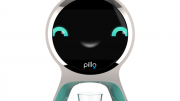The last decade has brought about many developments to genomics, stem cell research, cancer therapies and immunotherapy – to name just a few areas. Hand in hand with this, there have also been changes to the way that clinical trials are carried out, and the way new drugs are identified and developed.
For example, by analysing databases of real-world patient data, synthetic control arms can be generated, drug targets can be identified, clinical researchers can gather insights faster into their research questions, and they can even analyse the performance of drugs after regulatory approval. In turn, this is helping to reduce the time and cost associated with trials, minimise the burden on patients, and ultimately get new drugs to market faster.
The pandemic has without a doubt played a part in accelerating these advancements. Covid-19 has driven the healthcare and life sciences industries to improve patient care and dramatically speed up more inclusive and targeted drug development. It’s probably safe to say that during the pandemic we have seen a collective clinical trials process, prompting global cooperation for vaccine research and distribution for the Covid-19 virus in under a year – a pace never before possible.
This level of innovation has only been made a reality through Artificial Intelligence (AI) and machine learning, which has the capability to collect, analyse and produce insights from vast amounts of real-world patent data at pace – far quicker than could be done manually.
Innovating the clinical trial process in this way will continue to be critical to the pharma and life science industry going forwards, in order to support the process from drug discovery through to trials, post-market approval and drug launch.
Developing synthetic control arms
There are many challenges associated with traditional approaches to clinical trials. Factors such as speed, accuracy, costs, failure rates and diverse patient population recruitment in combination with our lack of understanding the underlying biology of diseases, all hinder the evolution of the process.
By using synthetic control arms, clinical development and drug discovery can be transformed. Pharmaceutical companies can use them to improve clinical trial design and success rates. More specifically, synthetic control arms help overcome patient stratification challenges and reduce the amount of time it takes to develop medical treatments. Beyond that, it can also help to improve patient recruitment by allying patient concerns about receiving a placebo, and enable the management of large diverse trials.
Essentially, synthetic control arms utilise both real-world and historical clinical trial data to model patient control groups, removing the need to administer placebo treatments to patients, which can be detrimental to their health, negatively affect trial enrolment and patient outcomes. This approach can be particularly useful for rare diseases where patient populations are smaller, and where lifespan is short due to the aggressive nature of the disease.
Deploying this technology throughout clinical trials and taking the step to bring trials closer to the patients can hugely reduce the inconvenience of traveling to research sites and the burden of undertaking consistent medical tests. Time spent on recruiting representative patients during the trial process can therefore be streamlined.
AI and ML to support drug discovery
For clinicians, applying machine learning, and AI in particular, during the clinical trial process means previously collected data sets can be analysed and at a much faster pace, often with greater efficiency and more reliability. At a time when clinical trials, and the whole health industry is undergoing huge amounts of digital transformation, integrating synthetic control arms into medical research offers new and exciting opportunities that can revolutionise drug development.
With the number of available data sources continuing to increase – from electronic medical records, patient reported information, personal devices and health apps – these synthetic control arms could become the fastest and safest way for pharma companies to use real-world data for research into diseases with large enough patient populations.
Leveraging real-world data to drive synthetic control arms and applying AI and ML technologies to analyse it, offers the promise of more efficient, safe and fast paced trials. It poses the opportunity for researchers to quickly achieve more homogeneous patient populations and gain meaningful insights.
Final thoughts
Without a doubt, there has been mindset shift towards applying advanced technology like AI in the pharma and healthcare sector, partially triggered by the pandemic and the rapid development of the COVID-19 vaccines.
Greater amounts of patient data are now being collected than ever before, and clinical researchers will be able to use this wealth of information to develop drugs and treatments with far more targeted, cost and time effective results. With this, we’re also seeing the development of platforms to gather, sort and analyse these datasets. For example, SENSIGHT which is developed by Sensyne Health, in close collaboration with hospitals and healthcare providers.
The pandemic brought about an urgency to speed up the way we develop vaccines – and clinical trials were a huge part of this. Vaccine uptake in the UK wouldn’t be as high had the clinical trials into SARS-CoV-2 not utilised new and innovative technologies, and sparked the global collaboration between pharma, technology companies and governments we all witnessed. Now, looking to the future, we must continue to innovate and make the whole drug discovery and research process as quick, safe and effective as possible.
Dr Nick Scott Ram, Chief of Data Analytics, Partnerships & Delivery and Commercial Director, SENSIGHT – Life Sciences, Sensyne Health





